AACtual Therapy: Running AAC Groups

We are just delighted to share the AACtual Therapy of Arizona-based SLP, Deanna Wagner. We’ve known Deanna by reputation for a long while, but got to meet her in person at ISAAC this past summer. She has been involved in the AAC world for over 20 years.
Her story as an AAC clinician is an interesting one: “I was lucky enough to attend one of the first university AAC courses, at the University of Wisconsin-Whitewater. My instructor was Dr. Mary Blake Huer, who was a recent president of USSAAC. Because we did not have enough courses in the communication disorders program, I also studied in the special education department and received a 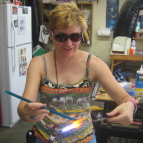 graduate degree in severe/profound handicaps. My first job was as AAC evaluator and trainer at Curative Rehabilitation in Wisconsin. I was lucky enough to meet a number of the inspirational team members who made up the model programs for AT consideration/implementation in schools (WATI) and joined the QIAT group. After about 5 years of attending Closing the Gap and state-level conferences, I got to know Caroline Musselwhite (one of the founding members of ISAAC) and decided to move to Phoenix, AZ, to work with her on a grant for AT implementation with preschoolers (through an agency called SWHD). We worked on quality indicators for preschool and were then accepted for a grant to work with the AZ Dept of Ed. We provided state-level support until the dept of ed decided to hire their own staff rather than contracting to SWHD. I continued to work with SWHD to provide AAC evaluations and follow-up. This agency is still pro-active in seeking funding for little projects, so I am also able to work with Caroline Musselwhite on a Balanced Literacy Project (providing coaching and training in classrooms with students who use AAC and are struggling readers/writers), as well as Out & About (meeting monthly in the community with AAC users and people who support them).
graduate degree in severe/profound handicaps. My first job was as AAC evaluator and trainer at Curative Rehabilitation in Wisconsin. I was lucky enough to meet a number of the inspirational team members who made up the model programs for AT consideration/implementation in schools (WATI) and joined the QIAT group. After about 5 years of attending Closing the Gap and state-level conferences, I got to know Caroline Musselwhite (one of the founding members of ISAAC) and decided to move to Phoenix, AZ, to work with her on a grant for AT implementation with preschoolers (through an agency called SWHD). We worked on quality indicators for preschool and were then accepted for a grant to work with the AZ Dept of Ed. We provided state-level support until the dept of ed decided to hire their own staff rather than contracting to SWHD. I continued to work with SWHD to provide AAC evaluations and follow-up. This agency is still pro-active in seeking funding for little projects, so I am also able to work with Caroline Musselwhite on a Balanced Literacy Project (providing coaching and training in classrooms with students who use AAC and are struggling readers/writers), as well as Out & About (meeting monthly in the community with AAC users and people who support them).
One of my first AAC clients in Phoenix was an adult who attends a great Day Program called ValleyLife. Over the years, this program has grown into a magnet site with an adapted computer lab and 14 clients who use AAC devices. I am there two days per week, providing speech therapy and training the day program staff. Another special client was a preschooler in 2005, who I supported when he went on to attend kindergarden at the Foundation for Blind Children. After 2nd grade, he began attending school near my home, and I continued to help as I could. This student has a special place in my heart, so when a part-time AT position opened up at the school district, I decided to take it. This is now the 5th school year that I have been providing AT services, and the second year I am also providing speech therapy. I have 12 middle school students on my caseload.
I forgot to mention that I have been interested in Spanish since I was a little girl and completed a minor while studying communication disorders. So far I have not sought certification to become a bilingual speech therapist, but I have spent a lot of time with families here in Phoenix and am feeling very comfortable now with their culture and language. Some of the AAC device manufacturers have asked for my input and I have provided AT/AAC trainings in Mexico, Brazil and Peru. My other interests (besides travel) include working with glass (lampwork beads and kiln-fired jewelry, bowls, plates) and dogs. I am looking for my next forever dog before I can start the process of either fostering or raising a service puppy.”
When I invited Deanna to participate in this series, she did something totally natural for her, that makes me admire her even more: She asked her AAC clients what they thought was important.
Group Rules for Therapy/Training
I have spent nearly 15 years in the Phoenix area working with AAC users at school, in the community,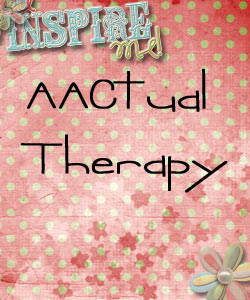 and in an Adult Day Program. I also train families and other support personnel when a new communication device is recommended. Due to the high demand for device training and therapy, it is often necessary to group people. I asked my adult clients and families what they felt were the most crucial elements to successful sessions. Here is what we came up with together:
and in an Adult Day Program. I also train families and other support personnel when a new communication device is recommended. Due to the high demand for device training and therapy, it is often necessary to group people. I asked my adult clients and families what they felt were the most crucial elements to successful sessions. Here is what we came up with together:
1) Respect and believe in each other
2) Know your role
3) Know your goals
Other posts have addressed all three of these elements, so I will highlight as it applies to our group dynamics.
Respecting each other involves accepting that we all communicate in many different ways. Each person in a group session has something to offer, and should be given an opportunity to take a turn to share experiences, joys, and/or concerns. We frequently start a training session with a status update on device use and a therapy session asking if anybody has news since last time we met. We respect each other’s time by agreeing that we are coming together to learn from each other. We all agree that everyone has potential to learn.
Knowing your role can be challenging. It is important that roles/responsibilities be discussed and reviewed on a regular basis. In a group therapy session, we typically see 3 roles: group leader (i.e., SLP), AAC learner(s), and AAC facilitator(s). In our therapy sessions, the group leader is expected to guide practice of vocabulary that can be found on the AAC devices. She asks open-ended questions and gives everyone a chance to participate. All answers are acknowledged, either verbally or on a Smart Board for everyone to see. Clarification is sought through more closed-ended yes/no responses. Messages are re-cast or expanded as needed. Vocabulary that is part of the targeted lesson is often modeled on the Smart Board using computer-based AAC emulators. AAC learners are expected to use their voice, body, or AAC device to gain attention for their turn to respond to the group. They are expected to try to find an answer or a way to participate every time the group leader poses a challenge to the group. The AAC facilitators (Day Program staff, peers, school staff, family members) are there to help. They learn where vocabulary is located and quietly help the AAC learners to participate. When somebody is struggling, the AAC facilitator may ask the group leader on behalf of the AAC learner. This type of question is often a learning opportunity for the whole group and the leader can take time to clarify how the vocabulary is organized in the AAC devices.
Knowing your goals is important for all participants in group training/therapy sessions. For training sessions, it is important that the lead trainer understand that some participants have limited expectations for how their family members/students will use the device. Talking about goals for device use may expand their understanding about how AAC can support a variety of skills. We use the 4 competency areas from Dr. Janice Light: Social, operational, strategic, and linguistic. Additional goals are sometimes taken from the Language Stages on the AAC Language Lab (Prentke Romich Company). AAC learners with goals for expanding their communication to make longer messages should remember that single word answers will be met with encouragement to compose longer answers or add more information. Goals for communication partners that support development of AAC competencies can be found in the AAC Profile (Dr. Tracy Kovach), available from LinguiSystems. We also watch videos and complete practice sessions for communication partner techniques as presented in the Implementation Toolkit on the Dynavox website.
Filed under: PrAACtical Thinking
Tagged With: AACtual therapy, Deanna Wagner, goals, groups, respect, roles
This post was written by Carole Zangari

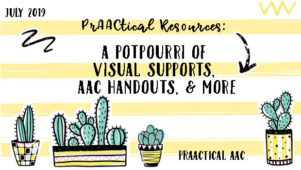
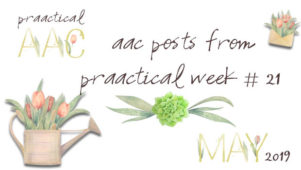
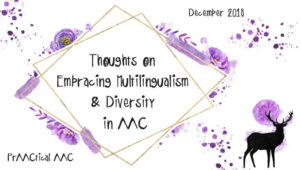
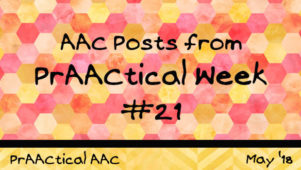
2 Comments
What a great model of therapy! Thank you so much for sharing!
Hi , My Name is Wayne Roupp . I have CP. I use an Eco 2 with eye gaze . I live at the Margaret E. Moul Home in York, Pa. It is a home for people with disability , mostly CP. We have about twenty people who have a communication device. On Wednesday afternoons we have a communication device group and I asked to lead the group. Do you have something easy for me because it is my first Time?
Thanks , Wayne